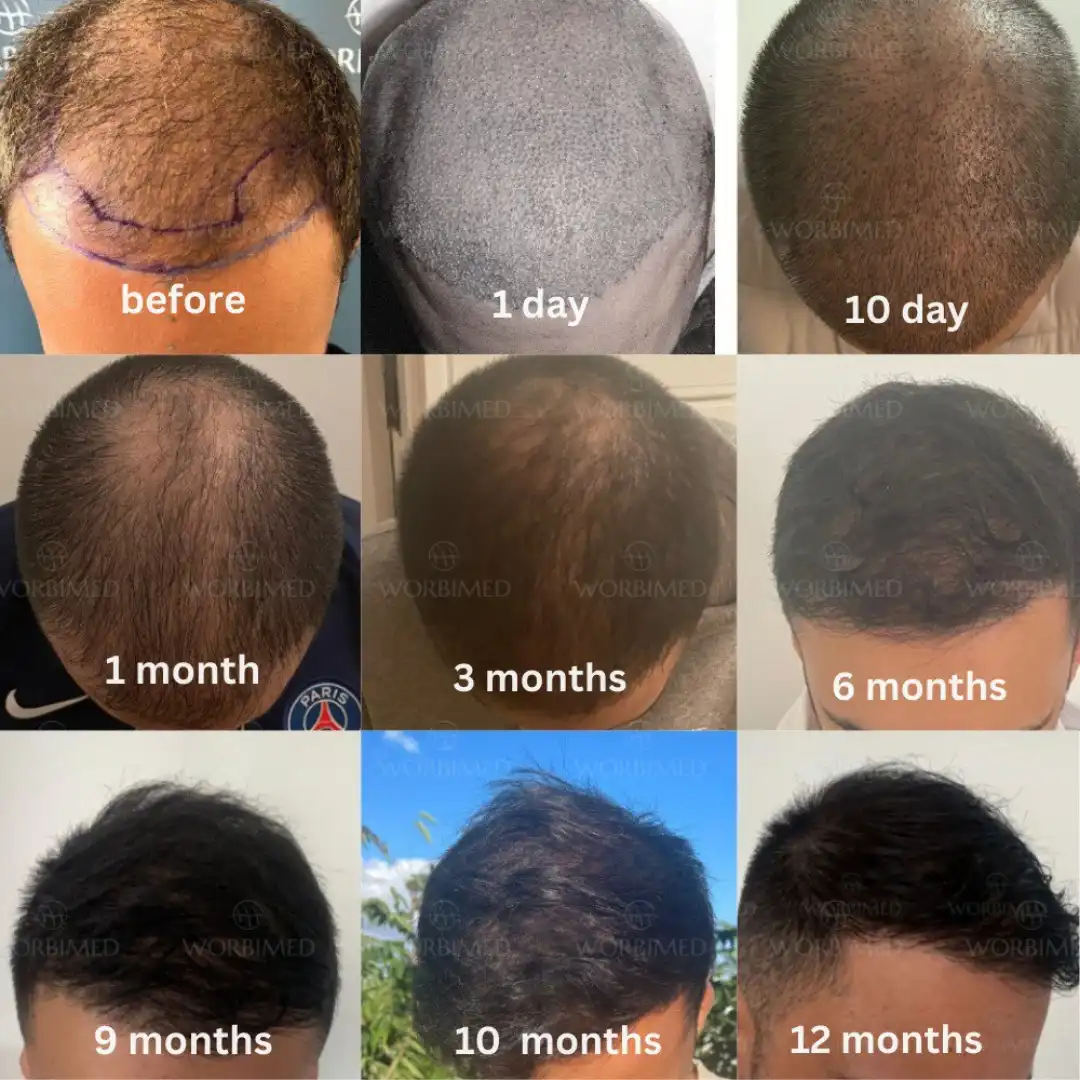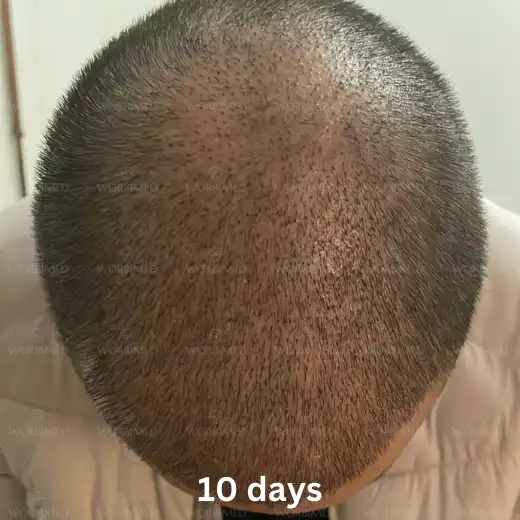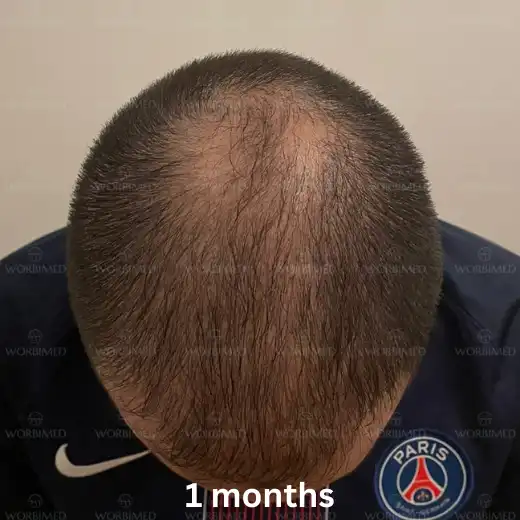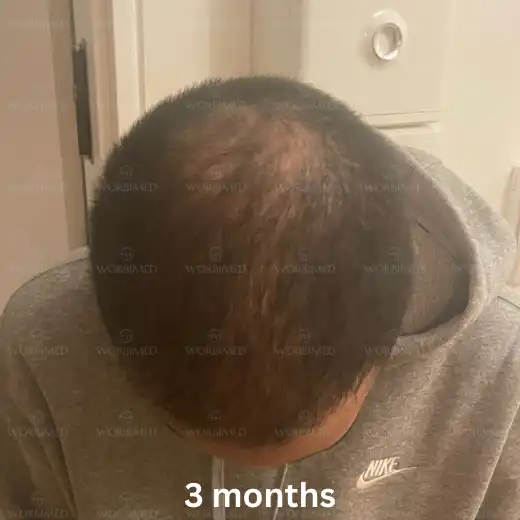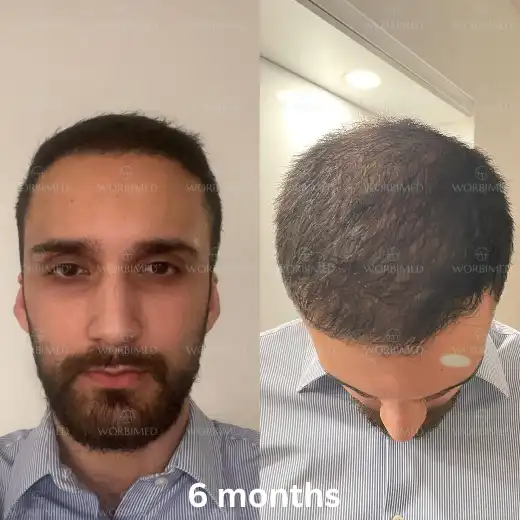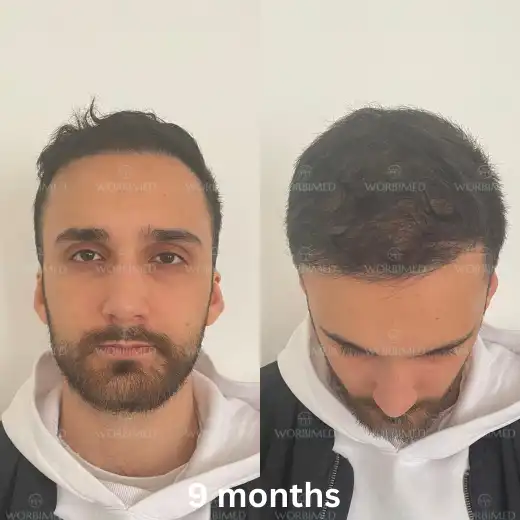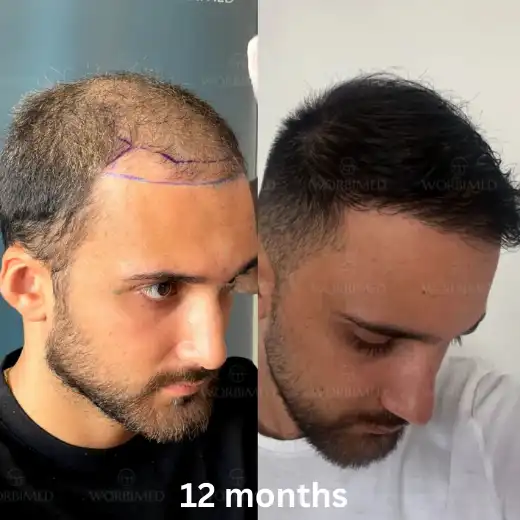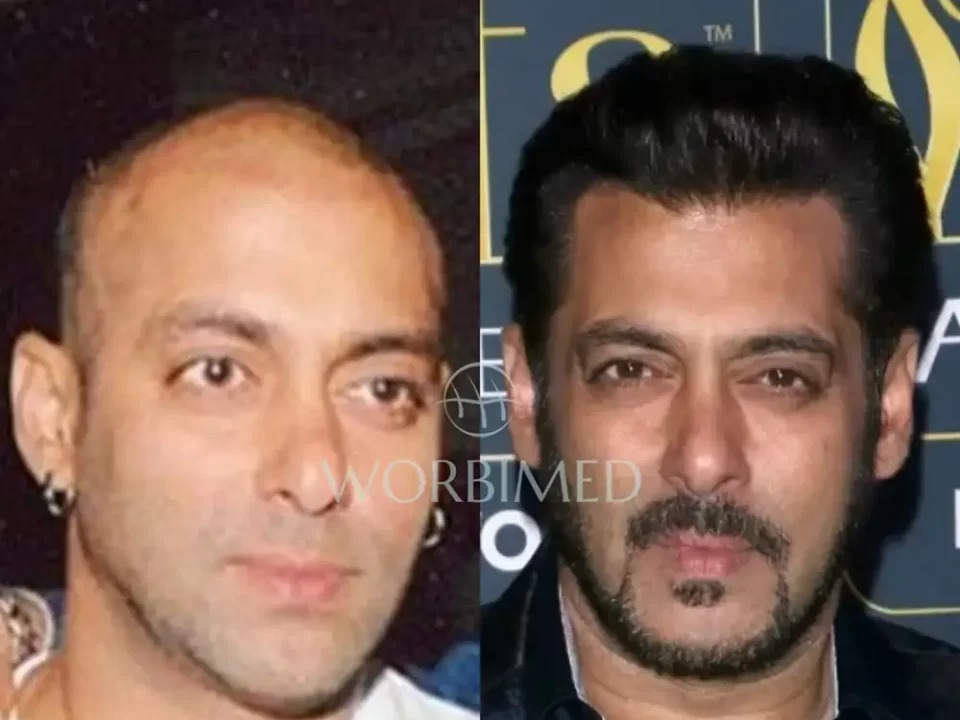Hair Transplant Timeline Progress
Understanding the hair transplant timeline progress is similar to observing a plant sprout. In the first month, little change is evident, though some might notice hair shedding. By the third month, excitement builds as tiny new hairs begin to appear. At the 6-month point, the hair starts to thicken, much like a forest in early growth. By 9 months, the change is undeniable: the hair is fuller and stronger. At the one-year mark, the transformation wraps up, leaving one with natural and resilient hair. This journey over a year gives many hope, showcasing the procedure's effectiveness. Watching these key stages, individuals can truly understand the progression of hair growth and the success of the transplant.
1 day after hair transplant
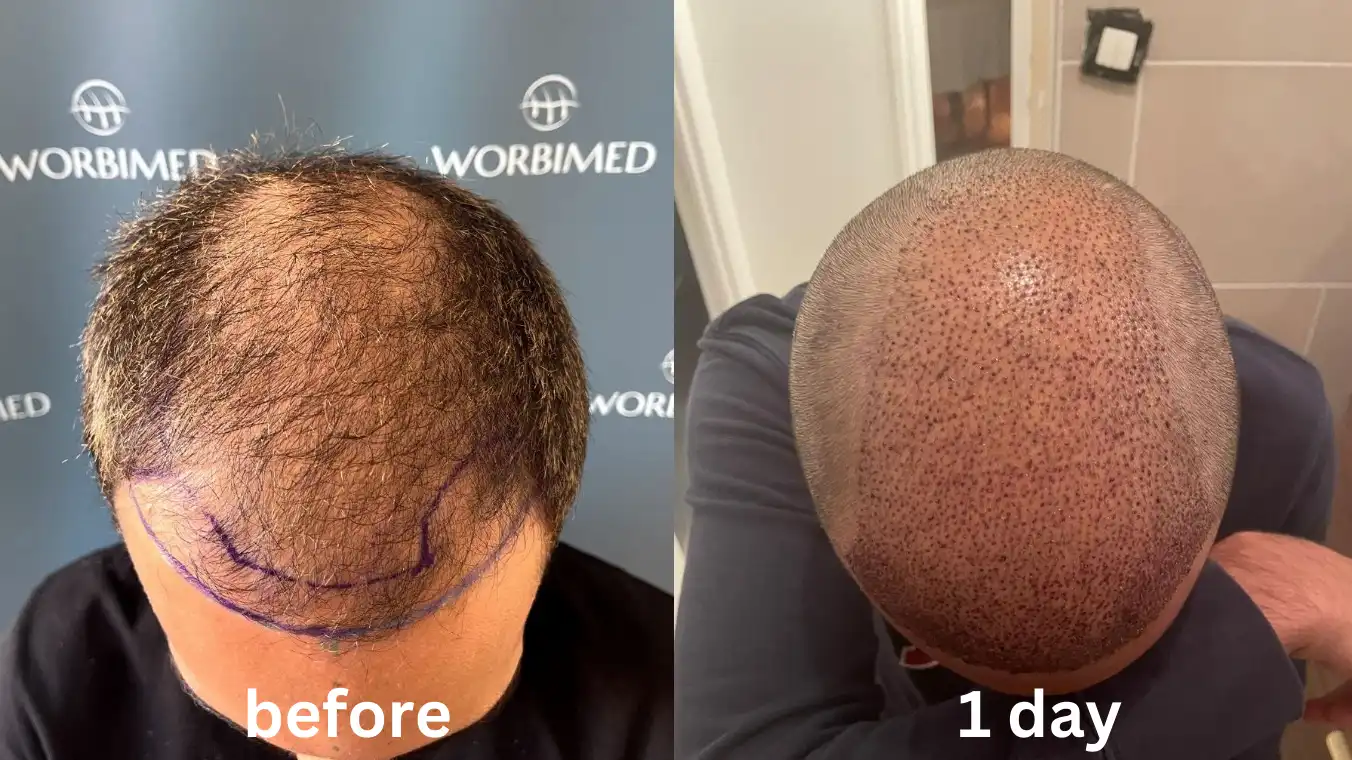
Swelling after hair transplant
Swelling after a hair transplant is common and expected. It usually starts 2 to 5 days post-surgery, especially around the forehead and eyes. Although it might look alarming, it's the body's natural healing response. Cool compresses can help lessen the swelling. It's also beneficial to sleep with your head elevated, as this can reduce fluid buildup. It's essential to avoid heavy activities that might increase blood flow to the scalp, intensifying the swelling. If the swelling lingers or causes concern, it's vital to consult your doctor. With proper attention, swelling generally eases within a week. Adhering to post-care guidelines ensures optimal recovery and results.
10 days after hair transplant
10 days after hair transplant, significant healing is underway. By this time, the transplanted grafts are firmly rooted, and a crust might form. It's key to gently remove any crusts. The skin's redness should also lessen. It's vital to keep up with hair and scalp care, washing regularly to clear away dry skin or crusts. Once the crusts are gone, you can slowly resume your usual routines. Essentially, the core healing after the transplant is done, and improvements in hair and scalp health continue. Plus, 10 days post-transplant, it's generally safe to start wearing hats again.
1 month after hair transplant
1 month after a hair transplant, many experience "shock hair loss." Starting from the second week and lasting up to 2-3 months, this intense phase can be concerning. But it's a normal part of the healing process as hair follicles rejuvenate. It's key to remember that this isn't permanent hair loss. Instead, it's just a temporary phase before the new hair starts growing. So, if you're seeing hair thinning around this time, don't panic. It's a typical step in the hair transplant journey.
3 months after hair transplant
3 months after a hair transplant marks a key phase: the active growth of the transplanted hair. This period is a turning point in the transplant journey. Around 3 to 4 months in, you'll start to notice your new hair gradually sprouting. It's an exciting time as the early signs of change become visible. This moment showcases the beginning of the tangible results from the procedure. It's a reminder that patience pays off, and the full benefits of the transplant will soon unfold.
6 months after hair transplant
6 months after a hair transplant, the progress is clear. By this point, hair reaches about 60-70% of its expected thickness. The hair sprouts faster, getting thicker each week. But it's key to understand this isn't the end result. Full hair density shows up a year post-transplant. Additionally, hair on the crown might take longer, around 12-14 months, due to unique blood circulation in that zone.
9 months after hair transplant
9 months after a hair transplant, visible changes are clear. The transplanted hair is much thicker, and the hairline looks nearly complete. This stage brings a notable increase in hair's appearance and density. From thin patches to a fuller look, the transformation is inspiring. It's during this period that many feel a surge in confidence. The results of the transplant are evident, and the prospect of further improvements keeps spirits lifted.
12 months after hair transplant
12 months after a hair transplant, the journey reaches a significant milestone. Both the donor and transplanted zones exhibit full recovery. This one-year mark signifies more than just growth; it's about newfound freedom. You can now dive into coloring, shaping, and exploring various hair care products without any reservations. The cautious days post-surgery are a distant memory. With a fully restored mane, the door opens to a world of styling possibilities, boosting confidence and allowing personal expression through hair like never before. Celebrating this stage is about embracing not just the end of a process, but the beginning of endless hair adventures.
In conclusion:
The hair transplant timeline progress reflects modern medicine's advances. The final results become evident around the 12-month mark. However, every individual's journey can differ. When the crown area is addressed, full results might extend to 18 months. This timeline offers an insightful roadmap for those venturing into hair transplants. It's vital to understand that while most see changes within a year, patience is key. Some might need to wait a little longer, especially if the procedure's scope was extensive. Monitoring and appreciating each phase ensures you stay informed and have realistic expectations, making the process smoother.

